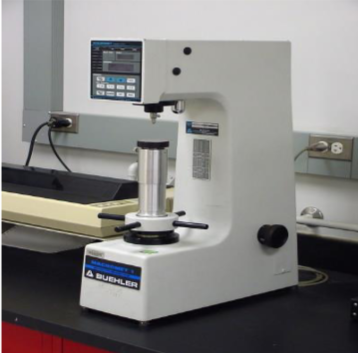Investigation of heat treatment strategies for improvement of production capacity of coin stamping dies
DOI:
https://doi.org/10.23917/arstech.v2i2.405Keywords:
Heat treatment, Production capacity, Stamping dies, Bohler K340, QuenchingAbstract
This paper presents a study on the production capacity of stamping dies for minting coins under different heat treatment processes, particularly austenite temperatures, using a vacuum furnace. In the study, the specimen material was made from Bohler K340 steel. The first heat treatment strategy included heating the specimens to a stable austenite temperature at 1080°C, then holding for 120 minutes and cooling rapidly with gas quenching media with a pressure of 5 bar. Tempered treatment was performed at 500°C. Another strategy was similar to the first one, except the heating temperature at 1060°C and double tempering at 575°C. After the heat treatment process, microstructure observation and hardness testing were carried out. Finally, the production of the die capacity testing on the coining machine was conducted. The results of the specimen surface photographs of the two heat treatment strategies show a significant difference in the microstructure, similarly with the hardness value obtained from single tempering is 61.98 HRC and from double tempering is 57.94 HRC. The production capacity test result indicates that the average capacity of first and second dies are 101,250 coins and 171,150 coins, respectively. It means that the second dies exceed the minimum standard production capacity of dies as determined by the Quality Control department, which is 150,000 coins.
Downloads
References
F.A. Husain, and Y. Setiyorini, ''Pengaruh variasi temperatur austenisasi pada proses heat treatment quenching terhadap sifat mekanik dan struktur mikro friction wedge Aisi 1340'', Jurnal Teknik Pomits, Vol. 2, No. 2, pp. 324-329, 2013. https://doi.org/10.12962/j23373539.v2i2.3767
K.Y. Rasyidy, and S. Suwarno, ''Pengaruh temperatur austenisasi dan proses pendinginan terhadap strukturmikro dan proses pendinginan baja paduan 05 CCRMNSI'', Jurnal Teknik ITS, Vol. 6, No. 2, pp. F308-F311, 2017. https://doi.org/10.12962/j23373539.v6i2.26796
M.H.K Sanij, S.S.G. Banadkouki, A.R. Mashreghi, and M. Moshrefifar, ''The effect of single and double quenching and tempering heat treatments on the microstructure and mechanical properties of AISI 4140 steel'', Materials and Design, Vol. 42, pp. 339–346, 2012. https://doi.org/10.1016/j.matdes.2012.06.017
M. Fitrullah, M. Hendra, A.A. Alhamidi, A. Herliawan, A. Aziz, D. Yanyan, T. Adhitya, T. Partuti, and J. Andinnie, ''The improvement of product quality and production capacity of metal coin dies by tempering treatment and PVD. TiN coating in IsodurTM Steel'', Advanced Materials Research, Vol. 1112, pp. 323-328, 2014. https://doi.org/10.4028/www.scientific.net/AMR.1112.323
L. Pezzato, C. Gennari, D. Chukin, M. Toldo, F. Sella, M. Toniolo, A. Zambon, K. Brunelli, and M. Dabalà, ''Study of the effect of multiple tempering on the impact toughness of forged S690 structural steel'', Metals, Vol. 10, No. 4, 507. pp. 1-12, 2020. https://doi.org/10.3390/met10040507.
P. Jurci, M. Domankova, J. Ptacinova, M. Pasak, M. Kusy, and P. Priknerova, ''Investigation of the microstructural changes and hardness variations of Sub-Zero treated Cr-V Ledeburitic tool steel due to the tempering treatment'', Journal of Materials Engineering and Performance, Vol. 27, No. 4, pp. 1514-1529. 2018. https://doi.org/10.1007/s11665-018-3261-6.
G. Hiller, ''Advantages of low pressure carburising and high pressure gas quenching technology in manufacturing.'', International Heat Treatment and Surface Engineering, Vol. 8 no. 1, pp. 35-41, 2014. https://doi.org/10.1179/1749514813Z.00000000087.
B. Liš?i?, ''Gas quenching with controllable heat extraction'', Materials Science Forum, Vol. 539-543, pp. 4663-4668, 2007. https://doi.org/10.4028/www.scientific.net/MSF.539-543.4663
R. Atraszkiewicz, B. Januszewicz, L. Kaczmarek, W. Stachurski, K. Dybowski, and A. Rzepkowski, ''High pressure gas quenching: distortion analysis in gears after heat treatment'', Materials Science and Engineering: A, Vol. 558, pp. 550–557, 2012. https://doi.org/10.1109/CATCON.2017.8280216.
A. Al?Ezzi1, and A.A. Shehab, ''Effect of heat treatment on the microstructure and property of aerospace punch dies'', Metallography, Microstructure, and Analysis, Vol. 8, pp. 314–328, 2019. https://doi.org/10.1007/s13632-019-00538-z
P. Abbaszadeha, S. Kheirandisha, H. Saghafiana, and M.H. Goodarzya, ''Effect of austenitising temperature on mechanical properties of the mixed bainite-martensite microstructure in CrMoV steel'', Materials Research, Vol. 21, No. 1, 2018. https://doi.org/10.1590/1980-5373-MR-2017-0469.
L. Anggraini, ''Hardenability of ASSAB 760 steel during tempering for punch holder applications'', Solid State Phenomena, Vol. 266, pp. 13-18, 2017. https://doi.org/10.4028/www.scientific.net/SSP.266.13.
Bohler-Edelstahl GmbH & Co KG, ''Cold work tool steel catalog'', 2020.
A. Bardelcik, M.J. Worswick, and M.A.Wells, ''The influence of martensite, bainite and ferrite on the as-quenched constitutive response of simultaneously quenched and deformed boron steel – Experiments and model'', Materials and Design, Vol. 55, No. 2, pp. 509-529, 2014. http://dx.doi.org/10.1016/j.matdes.2013.10.014.
B. Bandanadjaja, W. Purwadi, N. Lilansa, D. Idamayanti, and TR S. Putra, ''The effect of a single quenching double tempering process on the mechanical properties of NiCrMo alloyed steel castin'g', IOP Conf. Series, 850, 012040, 2020. https://doi.org/10.1088/1757-899X/850/1/012040.
W.D. Callister, and D.G. Rethwisch, ''Materials science and engineering'', 9th ed, New York: John Wiley & Sons, 2011.
M.K. Banerjee, ''Fundamentals of heat treating metals and alloys'', Comprehensive Materials Finishing, Vol. 2, pp. 1-49, 2017. https://doi.org/10.1016/B978-0-12-803581-8.09185-2.
H. Chandier, ''Heat treater's guide practices and procedures for iron and steels'', 2nd ed, ASM International, 1994.
J.R. Davis, ''ASM Handbook Vol. 4?: Heat Treating'', 10th ed, Ohio: ASM International, 2007.
T.G. Digges, S.J. Rosenberg, and G.W. Geil, ''Heat treatment and properties of iron and steel'', 1996.
T. Sourmail, V. Smanio, and C. Ziegler, Novel nanostructured bainitic steel grades to answer the need for high-performance steel components (NANOBAIN). European Commission, Directorate-General for Research and Innovation. Luxembourg. 2013. .
E. Abbasi, Q. Luo, and D. Owens, ''Microstructural characteristics and mechanical properties of low-alloy, medium-carbon steels after multiple tempering'', Acta Metallurgica Sinica, Vol. 32, No. 1, pp. 1-15, 2018. https://doi.org/10.1007/s40195-018-0805-6.
L.C. Chang, and H.K.D.H. Bhadeshia, ''Austenite films in bainitic microstructures'', Materials Science and Technology, Vol. 11, No. 9, pp. 874-882, 1995. https://doi.org/10.1179/mst.1995.11.9.874.
A. Ståhlkrantz, P. Hedström, N. Sarius, H. Sundberg, S. Kahl, M. Thuvander, and A. Borgenstam, ''Effect of tempering on the bainitic microstructure evolution correlated with the hardness in a low-alloy medium-carbon steel'', Metallurgical and Materials Transactions A, Vol. 51, pp. 6470-6481, 2020. https://doi.org/10.1007/s11661-020-06030-6.

Downloads
Published
How to Cite
Issue
Section
Categories
License
Copyright (c) 2022 Nanang Ali Sutisna, Fahyudha Permana

This work is licensed under a Creative Commons Attribution 4.0 International License.










